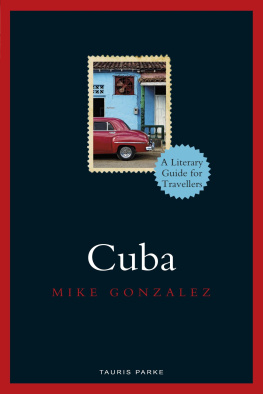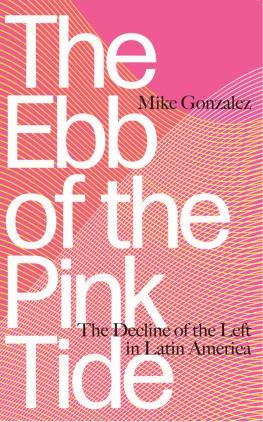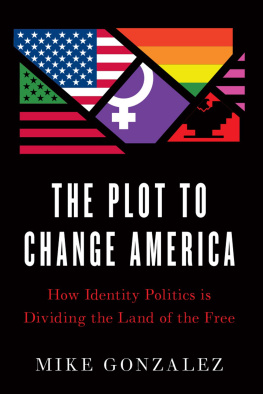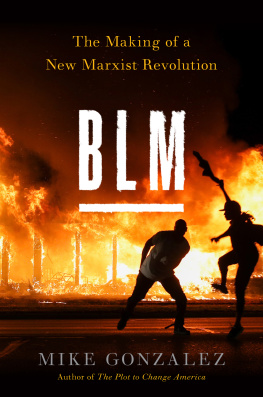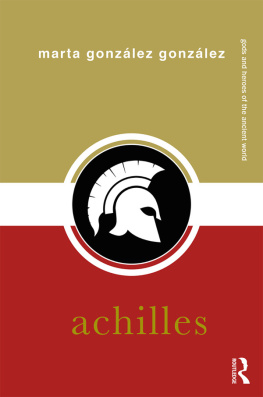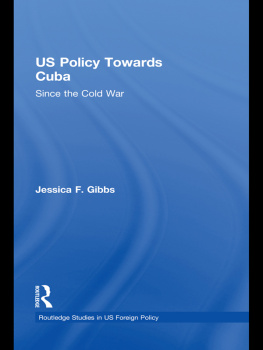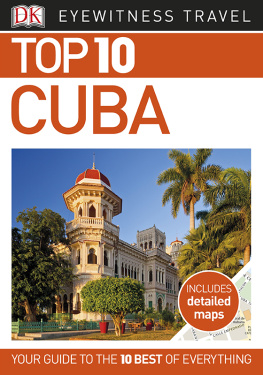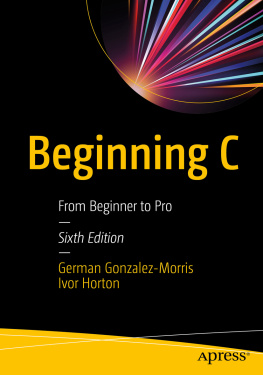Mike Gonzalez - Cuba
Here you can read online Mike Gonzalez - Cuba full text of the book (entire story) in english for free. Download pdf and epub, get meaning, cover and reviews about this ebook. year: 2021, genre: Politics. Description of the work, (preface) as well as reviews are available. Best literature library LitArk.com created for fans of good reading and offers a wide selection of genres:
Romance novel
Science fiction
Adventure
Detective
Science
History
Home and family
Prose
Art
Politics
Computer
Non-fiction
Religion
Business
Children
Humor
Choose a favorite category and find really read worthwhile books. Enjoy immersion in the world of imagination, feel the emotions of the characters or learn something new for yourself, make an fascinating discovery.
- Book:Cuba
- Author:
- Genre:
- Year:2021
- Rating:5 / 5
- Favourites:Add to favourites
- Your mark:
- 100
- 1
- 2
- 3
- 4
- 5
Cuba: summary, description and annotation
We offer to read an annotation, description, summary or preface (depends on what the author of the book "Cuba" wrote himself). If you haven't found the necessary information about the book — write in the comments, we will try to find it.
Cuba — read online for free the complete book (whole text) full work
Below is the text of the book, divided by pages. System saving the place of the last page read, allows you to conveniently read the book "Cuba" online for free, without having to search again every time where you left off. Put a bookmark, and you can go to the page where you finished reading at any time.
Font size:
Interval:
Bookmark:



To Dominic and Riikka, with love

Contents
Images
More than anything else, Cuba evokes images. For the sixties generation it was the compelling photograph of Che Guevara, taken at a 1960 rally in Havana, as visitors went to Cuba in search of a new version of socialism joyful, young and heroic in contrast to the grey anonymity of Eastern Europe. Guevaras face was the iconic representation of the Cuban Revolution of 1959, though fifty years after his death in Bolivia in 1967, it has become a symbol of all revolutions and their heroes, frozen in the moment of his death in another iconic image. The emaciated body of Guevara lies on a concrete slab; the photographer seems to have reproduced one of the great Renaissance images of the crucified Christ Andrea Mantegnas Lamentation ( c. 1480). Since then the face of the revolutionary has reappeared in one form or another across the world, on T-shirts, key rings, flags and placards, and in every style from naturalism to pop art. Guevara was not Cuban: he was born in Argentina, but became a leader of the 26th of July Movement that overthrew the dictatorship of Fulgencio Batista on the island in 1959. The iconic 1960 photograph of Che was taken by Alexis Korda at a rally to mourn those who had died in the explosion aboard La Coubre , a freighter carrying arms to Cuba from Europe. But Korda cropped the photograph before printing to excise the specific circumstances in which it was taken. The handsome young revolutionary looks up into the distance, a dream of a new world imprinted on his eyes or so we imagine and the image becomes both timeless and universal.
The leader of the Cuban Revolution of 1959, Fidel Castro, appears in fewer photographs than Che, but still a considerable number. He has been recorded countless times playing baseball he was a fanatical follower of the sport, as are most Cubans or delivering his famous speeches in Revolution Square in Havana to an infinitely patient audience absorbing his words despite the sun and the seven hours or so they will have to stand while the leader of the revolution speaks. In more intimate moments he is invariably smoking an enormous Cuban cigar, in tribute to Cubas second most lucrative industry. And in his long tenure of nearly fifty years he was pictured with most world leaders, from Khrushchev to two Popes. Until his illness and retirement in 2008, his authority in Cuba and his almost mythical stature in Latin America were unassailable. He was certainly ruthless with his opponents and, as successive US governments discovered, implacable.
This is Cuba as a political reference, the small island that took on the giant of the north in a sixty-year-long face-off, and remained unbowed, even in the face of the extreme hardships of the Special Period that followed the ending of Soviet support. This revolution on a single island suddenly became globally significant in October 1962, when a US spy plane identified Russian missile sites on Cuba the world held its breath as the two nuclear powers, the Soviet Union and the United States, moved closer to what seemed to be the ultimate confrontation and the Cold War nightmare seemed about to become reality. The October Crisis held the world in suspense, until a compromise was reached, without consulting the Cuban leadership. Oliver Stones film Thirteen Days (2000) conveys the tension of those times.
It may be that for many of the generation and a half born since the Cuban Revolution, Cuba conjures up something very different. In the first half of the twentieth century, after the US took effective control of its political and economic affairs, Cuba came to mean two things at once. It was the emblem of the forbidden, sensual and seductive, the beauty of its women (and its men) legendary, its clubs and hotels places of abandon, its casinos money-making machines. The reality is that many of these places were run from the US by the Mafia, under the benevolent protection of corrupt presidents such as Gerardo Machado (192533), Carlos Pro Socarrs (194852) and Fulgencio Batista (194044 and 19528), laundering Prohibition money and gambling profits through Meyer Lansky, the infamous Mafia banker. The shadier elements of Hollywood, whose criminal connections were well known, like George Raft or Frank Sinatra, added their reputations to the seductive propaganda for Cuban tourism, appearing regularly at hotels like the Capri, the Riviera or the Nacional, in which they had a major stake.
Havana still bears the hallmarks of those times, with its grand houses in Vedado and Miramar, modern palaces built by the very rich with a privileged view of the Caribbean Sea and easy access to clubs and casinos. Those who travelled in search of the pleasure domes or the beaches at Varadero will have had little or no idea of how Cubans really lived, not only in the poor districts of the capital, but also in the countryside where the sugar came from or in the hills of the east where peasants farmed in harsh conditions.
And then there is rum the immediately consumable product of the sugar plantations. Rum is associated with the pleasure palaces of pre-revolutionary Havana. The mojito cocktail, now global, reputedly sustained Ernest Hemingway through his long stays at the Hotel Ambos Mundos in Old Havana, where he was writing his novel For Whom the Bell Tolls , set during the Spanish Civil War (19369); the daiquiri was baptised by the US troops who occupied the Guantnamo region in 1898. They named the drink after the nearby town of that name. Graham Greene regularly took his daiquiri at Sloppy Joes bar in the city, recently restored to its appearance in its heyday. Rum is often paired with cigars. No matter where they are actually manufactured, the cigar is always associated with Cuba, where Europeans first encountered the pleasures of tobacco. It is the one product that is almost always freely available to the Cuban population, rather than shipped in its entirety to the markets of the north and west.
There is also a visual vocabulary linked to rum and to the Bacardi name, the Catalan family that produced the most famous rum on the island until the revolution. It is still produced, but in Puerto Rico its Havana Club is now the state-owned alternative. The association of Bacardi and rum with Cuba, however, persists but the accompanying images evoke a pre-revolutionary island, an idealised timeless Caribbean of smiling people with nowhere particular to go, swinging in hammocks or speaking of old times. The enormous success of the Buena Vista Social Club in the 1990s provided a soundtrack for those images, evoked in their turn by the boleros , the sentimental ballads sung by the elderly musicians of Buena Vista.
The advertising imagery gives the sense of a place out of time, its buildings crumbling, its vehicles old American cars held together with string (sometimes literally so), its population, black, brown and white, moving rhythmically through its streets to musical accompaniment. The suggestion is that this is the authentic Cuba. In fact the crumbling buildings and the ancient cars are not the expression of a charming anachronism, maintained as a film set, but of fifty years of sanctions imposed by the US government that have impoverished the economy and stimulated the Cuban capacity to repair everything and anything, atndolo con alambre (tying it together with wire) and resolver , a very Cuban term that speaks to the capacity of Cuban people to survive and find a way out of any crisis.
Font size:
Interval:
Bookmark:
Similar books «Cuba»
Look at similar books to Cuba. We have selected literature similar in name and meaning in the hope of providing readers with more options to find new, interesting, not yet read works.
Discussion, reviews of the book Cuba and just readers' own opinions. Leave your comments, write what you think about the work, its meaning or the main characters. Specify what exactly you liked and what you didn't like, and why you think so.

